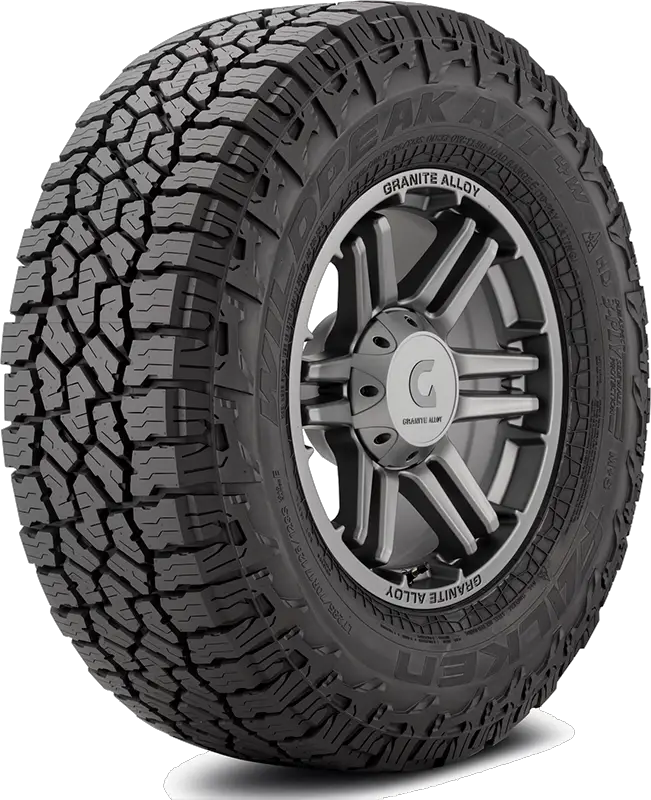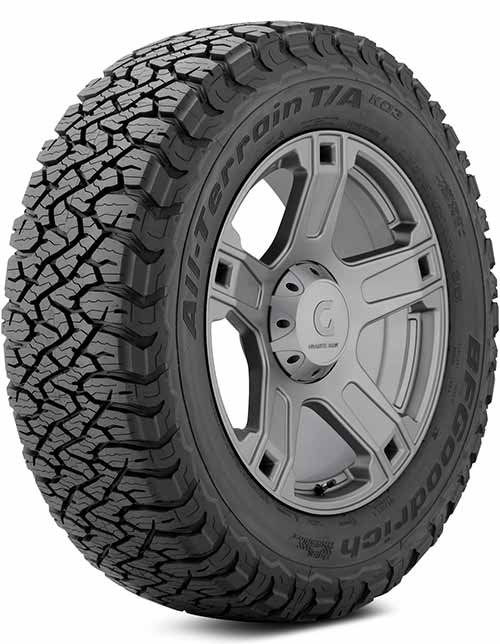Ever stood in an auto shop, staring at a wall of tires, feeling completely lost? Understanding tire sizes and conversions doesn’t have to be a mystery reserved for car experts. With the right knowledge, you can make smart choices for your vehicle, enhance your driving experience, and even save money.
Tire Size In Inches
Tire size in inches can be calculated from the three main tire measurements: section width (measured in mm), aspect ratio (a percentage of the section width), and wheel diameter (in inches). Converting these measurements allows you to understand how wide a tire is in inches and how tall the tire sidewall is, essential for selecting the right tire for your vehicle.
In this article, you will learn about the key tire measurements, how to convert them, the effects of changing tire sizes on the same rim, considerations for changing tire rolling diameter, and more. We’ll also demystify common misconceptions and emphasize the importance of professional guidance in tire selection and installation.
Let’s take a closer look.
Tire Size Conversion Calculator
What Is Section Width?
Section width (tire width) is the distance across the tire tread area from one side to the other. It’s usually measured in the metric tire size of millimeters (mm). Now, let’s make sense of what this means.
Why Does It Matter?
Knowing the section width of a tire can be super helpful for several reasons:
- Finding the Right Fit: When you buy new tires, you want them to fit just right on your car’s wheels. Knowing the section width helps you find that perfect fit.
- Safety Matters: Tires that are too narrow or too wide for your wheels can be unsafe. The section width helps you steer clear of those problems.
- Traction: The section width can influence how your car or truck feels on the road since it affects contact patch of the tire.
How to Measure It?
Most of the time, you don’t need to measure the section width yourself. You’ll find it printed on the tire’s sidewall. Look for a number followed by “mm,” like “205mm.” That number is your tire’s section width.
Converting Millimeters to Inches
Now, you might be thinking, “I live in a place where we use inches, not millimeters. What do I do?” Don’t worry! Converting millimeters to inches is a breeze. Here’s how you can do it:
- Find the Section Width in Millimeters: Look at the tire’s sidewall.
- Use the Conversion Factor: Multiply the millimeter measurement by 0.03937 (that’s the magic number to turn millimeters into inches).
- Voila! You’ve Got Inches: Now you know the section width in inches.
For example, if your tire’s section width is 205mm:
- 305 mm x 0.03937 = 12.00 inches
So, the section width is about 12 inches.
Section Width Conversion Calculator
What Is Aspect Ratio?
The tire’s aspect ratio sounds a bit technical, but it’s just a way to talk about how tall a tire’s sidewall is. The sidewall is the part of the tire that stands up and down between the road and the wheel.
The aspect ratio is a percentage, and it tells us how tall the sidewall is compared to the section width. It’s like a clue that helps us figure out the shape of the tire.
How Is It Measured?
The aspect ratio is usually a 2-digit number like “60.” Here’s what it means:
- It’s a Percentage: The aspect ratio is a percentage of the section width.
- It Tells You the Sidewall Height: You can calculate the sidewall’s height by multiplying the section width (in millimeters) by the aspect ratio (as a percentage).
Here’s an example to make it clearer:
- Section Width: 305mm
- Aspect Ratio: 60%
- Sidewall Height: 305mm x 0.60 = 183mm
So, the height of the sidewall would be 183mm.
Why Is Aspect Ratio Important?
Understanding the aspect ratio helps you:
- Choose the Right Tire for Your Ride: Different aspect ratios change the look and feel of your ride.
- Keep Things Safe: Like section width, picking the right aspect ratio is key to safe driving.
- Make Smart Choices: Whether you want a sporty look or a comfy ride, the aspect ratio plays a big part.
Converting Sidewall Height to Inches
Want to know the sidewall height in inches? You can use the same magic number we used for section width:
- 183 mm x 0.03937 = 7.20 inches
So, the sidewall height in our example is about 7 and 1/5 inches.
Aspect Ratio Conversion Calculator
Understanding Wheel Diameter
What Is Wheel Diameter?
Wheel diameter is a fancy term for the size of the hole in the middle of the tire, or to put it another way, the size of the wheel that the tire fits onto. It tells us how big the wheel is from one side to the other, and it’s usually measured in inches.
How Do We Measure It?
Measuring the wheel diameter is pretty straightforward. You just need to know the size of the wheel from one end to the other, going through the center. It’s already measured in an inch tire size. Here’s what you need to remember:
- It’s in Inches: Unlike section width, the wheel diameter is measured in inches.
- Find It on the Tire: Like the other measurements, you’ll find the wheel diameter printed on the tire’s sidewall.
Why Should You Care About Wheel Diameter?
Wheel diameter isn’t just a number; it has real-world uses:
- It Helps You Pick the Right Tire: Your tire needs to fit your wheel, and the wheel diameter ensures that it does.
- It Can Affect Your Ride: Believe it or not, the size of your wheels can change how your car feels when you drive.
Conversion Concepts
Why Converting Between Units Is Handy
Converting between units, like millimeters, inches, and percentages, isn’t just something for math class. It’s a practical skill that helps you understand tire sizes and make smart choices for your vehicle.
Converting Section Width: Millimeters to Inches
We’ve already talked about this, but let’s recap:
- Find the Section Width in Millimeters: Usually printed on the tire’s sidewall.
- Use the Magic Number: Multiply the millimeters by 0.03937 to get inches.
Converting Aspect Ratio: Percentage to Sidewall Height
The aspect ratio is a percentage of the section width. Here’s how to figure out the sidewall height in millimeters:
- Find the Aspect Ratio: It’s on the tire, right next to the section width.
- Multiply by the Section Width: Multiply the aspect ratio (as a decimal) by the section width in millimeters.
- Want Inches?: Use the magic number again to convert millimeters to inches.
Wheel Diameter: Already in Inches
Wheel diameter is usually already in inches, so no conversion needed there!
Why These Conversions Matter
Understanding these conversions helps you:
- Make Informed Choices: Know what those numbers on the tire mean and choose the right one.
- Talk the Talk: Speak confidently with mechanics and tire professionals.
- Stay Safe: Pick tires that fit well and perform safely on the road.
Changing Tire Size on the Same Rim
What Does It Mean to Change Tire Size?
Changing tire size means fitting a different-sized tire onto the same wheel or rim. You might do this for various reasons, like wanting a different look, improving performance, or replacing a worn-out tire.
Can You Put Any Size Tire on a Rim?
Not exactly. While there’s some flexibility, there are limits to how wide or narrow a tire will fit on a given rim with a certain width.
Factors to Consider When Changing Size
Here’s what you need to keep in mind:
- Rim Width: The width of the rim limits the width of the tire you can fit.
- Vehicle Specifications: Your car’s make and model will have specific recommendations for tire size.
- Driving Needs: Are you looking for a sportier feel or a smoother ride? Different tire sizes offer different driving experiences.
How to Know What Sizes Will Fit
- Check the Manufacturer’s Recommendations: Your vehicle’s manual or a professional can guide you to sizes that will fit.
- Understand the Limits: A tire that’s too wide or too narrow for the rim can cause safety issues.
- When in Doubt, Consult an Expert: If you’re unsure, a tire professional can help you find the perfect fit.
Pros and Cons of Changing Size
Changing tire size has some benefits and drawbacks:
Pros
- Customize Your Ride: Different sizes can offer a different look and feel.
- Vehicle Handling Performance Advantages: Depending on the size, you might get better handling or comfort.
Cons
- Potential Safety Risks: If the size isn’t right, it can lead to problems on the road.
- May Affect Other Parts: Changing size might affect things like speedometer readings or cause suspension wear.
Compatible Section Widths For A Given Wheel Width
What Is Rolling Diameter?
Rolling diameter (or tire diameter) is the overall height of the tire when it’s inflated and ready to roll. Think of it like the height of a wheel when it’s standing up on the ground. Changing this height can affect many aspects of your vehicle’s performance.
Why Would You Change It?
You might want to change the rolling diameter for a few reasons:
- Aesthetics: A larger or smaller tire might give your vehicle a distinct look.
- Performance: Different rolling diameters can change how your car handles, accelerates, or rides.
- Compatibility: You might need to match the rolling diameter to different wheels or vehicle modifications.
Calculating Rolling Diameter
The rolling diameter of a tire is essentially the total diameter of the tire, including the wheel and the inflated tire. To calculate it, you can follow these steps:
- Find the Aspect Height: First, you’ll need to calculate the height of the tire’s sidewall, known as the aspect height. You can reference the formula we previously discussed.
- Calculate the Total Sidewall Height: The total sidewall height is twice the aspect height (since the sidewall is part of the total height of the tire twice – at the top and bottom). For example, 7.20 * 2 = 14.4 inches.
- Add Rim Diameter: Finally, add the total sidewall height to the wheel diameter (in inches) to get the rolling diameter. If the wheel diameter is 16 inches, then the rolling diameter would be 14.4 + 16 = 30.4 inches.
What to Consider When Changing Rolling Diameter
Changing rolling diameter isn’t as simple as picking a new tire. Here’s what you need to know:
- Speedometer Accuracy: A change in rolling diameter can make your speedometer read wrong.
- Fuel Efficiency: Larger rolling diameters might reduce fuel efficiency.
- Handling and Comfort: The ride might feel different, either softer or firmer.
How Much Can You Change It?
There are limits to how much you can change the rolling diameter without causing issues:
- Vehicle Limits: Your vehicle will have specific guidelines on acceptable tire sizes.
- Rim Compatibility: The rim size will also limit how much you can change the rolling diameter.
- Professional Guidance: If you’re unsure, consulting with a tire or automotive expert is a wise move.
The Impact on Safety
Changing rolling diameter can have safety implications:
- Braking: It might affect how your vehicle brakes.
- Stability: Your car could feel less stable, especially at higher speeds.
- Wear and Tear: The wrong rolling diameter can cause extra wear on your vehicle’s components.
Additional Considerations
Speed Rating and Load Capacity
What Are They?
- Speed Rating: This tells you the maximum speed the tire can safely handle. It’s usually marked with a letter, like “H” for up to 130 mph.
- Load Capacity: This shows how much weight the tire can carry, usually measured in pounds.
Why Are They Important?
These numbers aren’t just random; they have real jobs:
- Safety: They ensure that can maintain vehicle speed capability and carrying capacity.
- Performance: They help your car ride smoothly and respond the way it’s supposed to.
How Changing Tire Size Affects Them
If you change the tire size, these ratings can change:
- Different Size, Different Ratings: A larger or smaller tire might have different speed ratings and load capacities.
- Potential Mismatch: If the new size doesn’t match your vehicle’s needs, it could create safety risks.
Resources
Below are some links you may find helpful when learning about tires
- How to read tire size – Popular Mechanics
- Tire size calculator & metric to standard size conversion tool – Quadratec
Final Thoughts
From the fundamental measurements like section width, aspect ratio, and wheel diameter to the critical considerations when changing tire size or rolling diameter, this guide has illuminated the path to smart tire choices. We’ve also explored the often-overlooked factors like speed rating and load capacity, debunked common misconceptions, and emphasized the value of professional guidance.
Good luck and happy motoring.




